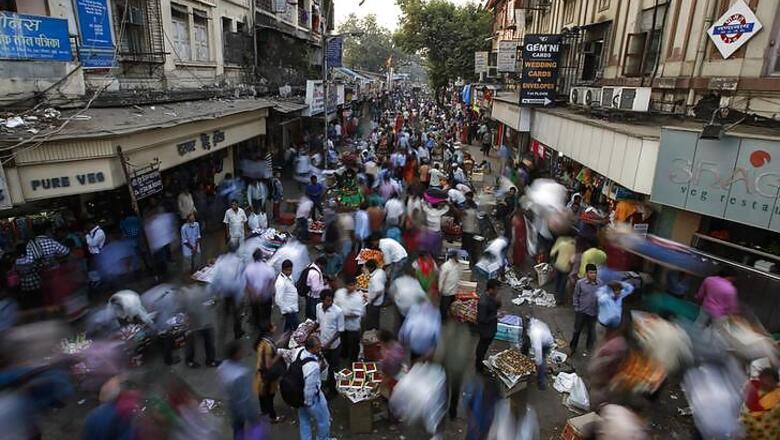
views
The Report 'Democracy in India: A Citizen's Perspective' tries to assess people's understanding and perception towards democracy. It is a part of a comparative study (State of Democracy in South Asia) of five South Asian countries that include, besides India - Bangladesh, Nepal, Pakistan and Sri Lanka. The first round of the SDSA was conducted in 2005 and a report based on it was published by Oxford University Press in 2008. After SDSA I, many political events have taken place that have changed the course of democracy as well as the lives of citizens. With this in view, Lokniti, CSDS initiated the second round of SDSA, in collaboration with colleagues from partner countries in 2011. SDSA II not only helps to understand how the changes that have taken place at the macro level have impacted the socio-economic and political conditions of the citizens at the macro level in the five countries, but also offers an opportunity to understand complex relationships between them. This report is India specific and was conducted in 2013 among 6043 respondents in 22 states of India. Its key findings are given below.
Professors Sanjay Kumar, Suhas Palshikar and SAndeep Shastri where the Principal Investigators of the Project and Ms Jyoti Mishra and Kinjal Sampt helped in the writing of the report.
Snapshots from the report
There has been a decline in democratic orientation and preference for authoritarian rule has gone up. Between 2005 and 2013, the proportion of those who support democracy has come down by 3 percent and the proportion of those who support authoritarian rule has gone up by 5 percentage points.

Proportion of democrats is not the only statistic that has taken a hit; satisfaction with democracy as a system of governance has also shown a downward trend. When compared to the 2005 SDSA survey, satisfaction with democracy has decreased by 9 percent. There has also been a disproportionate rise in the number of respondents who say they are dissatisfied with the way democracy works in the country - from 15 percent in 2005 this number has shot up to 37 percent of respondents (Figure 1.1).

Political efficacy, that is, belief in the system of governance, is considered foundational to the working of democracy. That each vote has an impact in politics is a postulate upon which the democracy theory rests. Orientation towards democracy decreases by 13 percent and indifference towards the nature of regime increases by 12 percent when one does not think that one's vote does not have an impact (Figure 1.3). Support or preference for authoritarian regime remains unaffected by whether the respondents believe their vote makes a difference in the way things are run in this country.

Overall, participation in non-electoral activities is higher than participation in electoral activities. Amongst all the political activities survey, voting was the most widely practiced activity (Table 2.1).

Those who think that the economic condition of their family and the country will be better in the future, adhere in higher proportions to the idea that sometimes authority is better than democracy compared to those who think their situation or country's situation will worsen in future (Figure 2.5 and Figure 2.6).


Trust in institutions has risen very marginally in the present survey (2013) as compared to the survey in 2005. The aggregate score suggests a rise of 2 points from 62 to 64 on a scale of 100. The worrying aspect is that elected institutions have fared worse than they did in 2005, while non elected institutions have fared better than they did in 2005. The elected executives like the national government and the local government have witnessed a drop in the trust levels by 6 and 5 percentage points respectively; however, the trust in state government has remained constant. As compared to other public institutions, political parties secured the least level of trust, as only 36 per cent of the respondents hold trust in them. However there is a marginal increase of about 2 percentage points in the level of trust when compared to the first round of the survey in 2005.
Institutions that are not elected by the people and do not have to seek their renewed mandate seem to be more trusted by the respondents. Trust in these non-elected institutions varies from institution to institution. For instance the police and the bureaucracy are institutions to which people are more likely to be exposed as compared to institutions such as courts and army, receive lower levels of trust. Nonetheless, the trust in all these institutions have increased as compared to the SDSA round I study. The army receives the highest level of trust amongst all the institutions, and it has deepened further by 5 percentage points in comparison to the previous survey (Figure 3.2). Similarly, popular support for army rule instead of democracy has also increased. When people were asked whether they want army rule, 30 percent asserted that army should govern the country; interestingly, agreement for army rule has gone up by 11 percentage points when compared to 2005 survey.


Twenty three percent of the respondents see education and employment as the most important issues that need to be addressed by government. Access to water and road are problems stated by 20 percent and 16 percent of the respondents respectively.



















Comments
0 comment